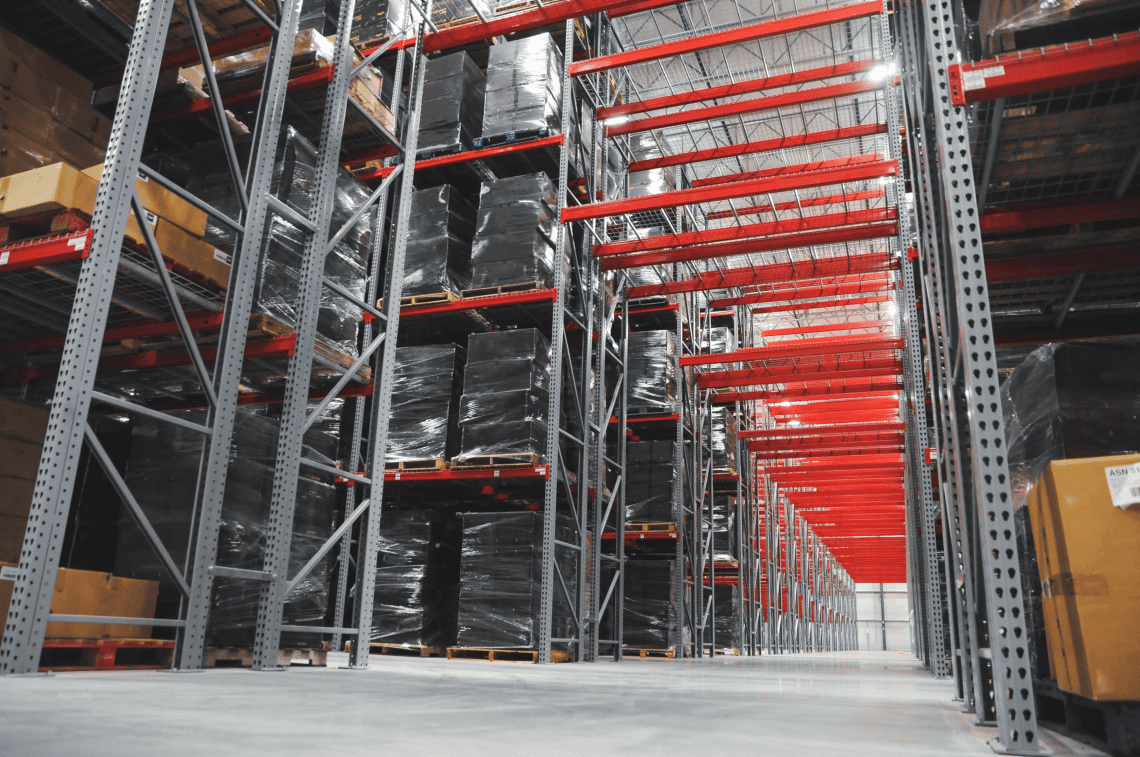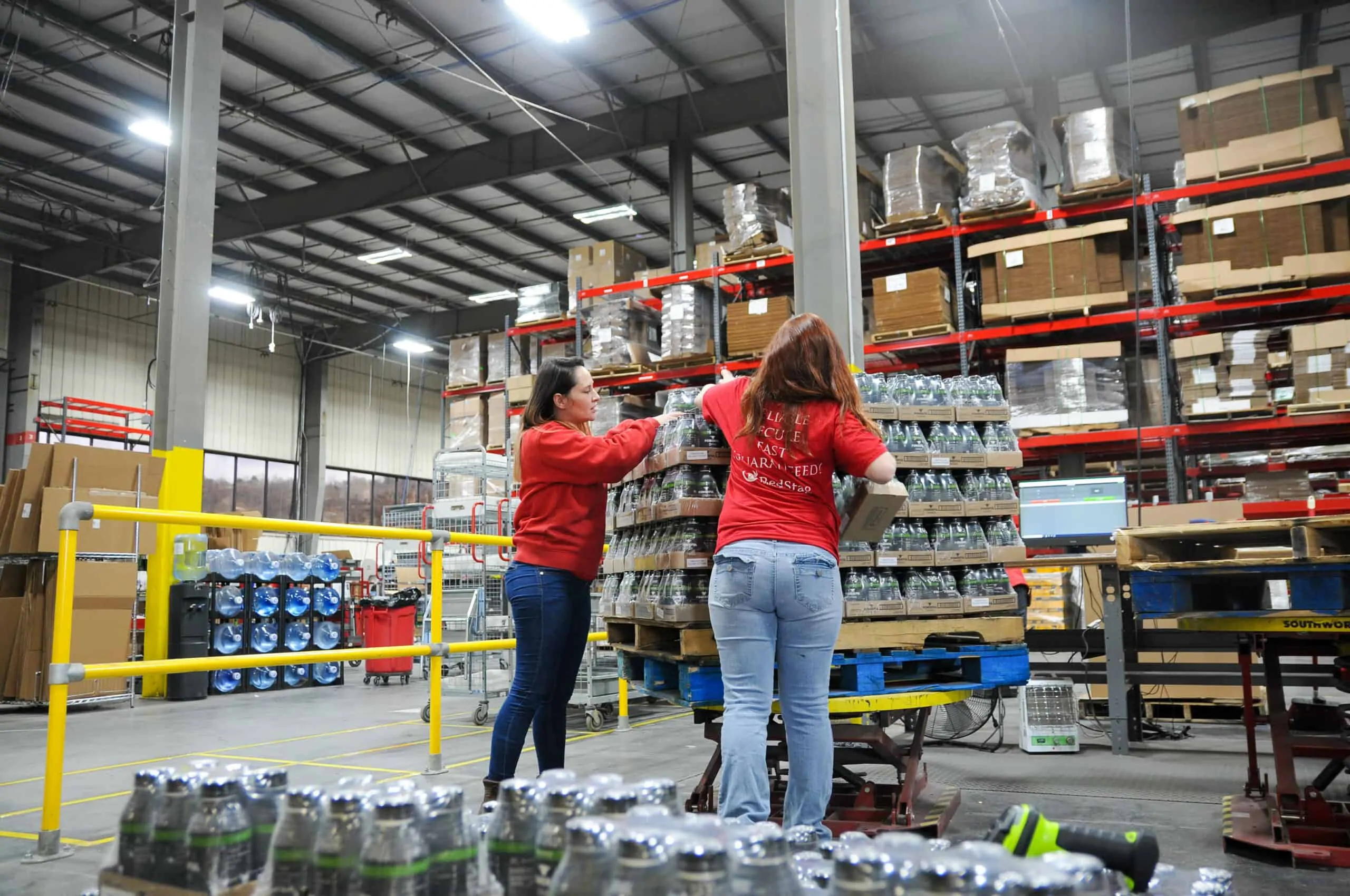Supply chain delays and demand spikes often mean out-of-stock items. You can quickly disappoint customers unless you have buffer stock ready to go. This extra inventory allows you to satisfy customer demands, even through supply disruptions or demand spikes.
Having a big buffer stock can provide a nice safety net that allows for some peace of mind. But it also comes with a high price tag. Reliable strategies and expert insights allow you to balance customer demands with optimal operations.
With expertise, you can deliver an excellent customer experience via reliable order fulfillment while navigating inevitable supply chain issues and keeping costs down.

TL;DR:
Buffer stock essentials

Buffer inventory (safety stock) helps protect against supply chain disruptions and demand spikes.

Benefits include preventing stockouts, improving customer satisfaction, and maximizing sales.

Calculate optimal levels based on lead time variability, forecast accuracy, and service level targets.

Regularly review and adjust safety stock levels to balance risk mitigation and cost efficiency.
What is buffer inventory?

Buffer inventory (also known as buffer stock or safety stock) is extra inventory held to mitigate supply chain disruptions or accommodate sudden spikes in demand. This excess inventory helps you meet customer needs even when there are unexpected demands or delays.

What benefits does buffer stock offer?
Maintaining buffer stock offers some meaningful advantages that make a strong case for investing in the extra inventory.

Prevents stockouts
Buffer stock allows you to continue fulfilling customer orders despite supply chain disruptions or sudden demand surges.

Improves customer satisfaction
Out-of-stock items can frustrate customers and drive them to competitors. But when customers know they can get what they want from you, they’re more likely to keep coming back.

Maximizes sales opportunities
Safety stock lets you fulfill unexpected spikes in demand so you can capture your full sales potential.

Navigating unexpected disruptions
Buffer stock is a lifesaver when faced with events like natural disasters, port congestion, or supplier issues. Having safety stock on hand allows you to continue meeting customer demand despite delays.
Optimizing buffer inventory levels: tips and strategies
Holding too much inventory can tie up capital and increase costs, while too little can leave you vulnerable to stockouts and missed sales opportunities. Consider these factors when thinking about how much safety stock to hold.
Lead time variability
If your average lead time (the duration between placing an order with your supplier and receiving the goods) is variable or unpredictable, maintaining higher levels of inventory to account for potential delays can be a smart decision.
Inventory forecasting accuracy
The accuracy of your demand forecasts directly impacts the amount of buffer stock you need. Maintain lower levels of safety stock when forecasts are typically accurate, but hold more inventory if forecasts are prone to errors or unexpected demand spikes are frequent.
Acceptable service levels
Service level refers to the percentage of time you aim to avoid stockouts. A higher service level target requires more buffer stock. Determine the service level that aligns with your business goals and customer expectations, and adjust your inventory accordingly.
Cost of carrying inventory
Assess the costs of holding safety stock (storage space, insurance, opportunity cost of tied-up capital) and weigh them against the potential benefits (avoiding lost sales, maintaining customer satisfaction).

PRO TIP: To optimize your safety stock levels, regularly review and adjust inventory based on changes in lead times and demand patterns, implement robust forecasting methods, collaborate with suppliers to reduce lead time variability, and continuously monitor inventory performance metrics like turnover and stockout frequency.
By considering these factors and implementing optimization strategies, you on the right path to find the balance of buffer stock for your business.

Calculate safety stock: methods and considerations
Now it’s time for some math. You have several available methods for buffer stock calculation, each with its own advantages and use cases. Take a look at the options below.

Safety stock calculation

Safety stock = (maximum daily usage × maximum lead time) – (average daily usage × average lead time)

Use when demand and lead times are relatively stable, and you need a simple way to calculate buffer stock levels.

Service level method

Calculate using Z-scores, which represent the number of standard deviations from the mean in a normal distribution.

Safety Stock = Z-score × standard deviation of demand × square root of lead time

Use when you have a specific service level target and want to ensure a high probability of meeting customer demand.

Time-based calculations

Use historical sales data and forecasted demand to set dynamic safety stock levels.

Adjust safety stock based on anticipated demand fluctuations, such as seasonal trends or promotions.

Regularly review and update buffer levels as new data becomes available.

Suitable for businesses with predictable demand patterns and accurate forecasting capabilities.

Heizer and Render’s Method (for lead time variability)

Safety Stock = Z-score × square root ((lead time × demand variance) + (average demand^2 × lead time variance))

Use when lead times are inconsistent, and you want to factor in both demand and lead time variability.

Key Takeaway: When thinking about how to calculate buffer stock, consider the stability of your demand and lead times, the accuracy of your sales data and forecasts, your desired service level, and the complexity of the calculation method. Remember that a safety stock formula provides a starting point, but you must regularly monitor and adjust based on actual performance.
Safety Stock Calculator
Combining multiple methods and using them in conjunction with other inventory management strategies optimizes your buffer inventory, striking the right balance between risk mitigation and cost efficiency.

How much buffer stock do you need?
Managing buffer stock effectively is an ongoing process requiring regular attention and adjustment. Consider the following strategies to optimize your safety stock.
Conduct regular reviews
Continuously monitor inventory levels, demand patterns, and supply chain performance. Adjust buffer inventory based on changing conditions, such as shifts in customer preferences, supplier lead times, or market trends.
Regular reviews help you stay agile and responsive to evolving needs so your safety stock remains aligned with your business requirements.
Prevent overstocking
Regularly assess inventory turnover rates and aim to minimize excess stock that ties up capital and increases carrying costs. Implement strategies like just-in-time (JIT) or economic order quantity (EOQ) to optimize stock levels and maintain a lean inventory without compromising your ability to meet customer demand.
Strategically distribute buffer stock
If your business operates multiple warehouses, consider strategically distributing buffer inventory across these facilities. By placing safety stock closer to your customers, you can reduce lead times and improve your responsiveness.

Strategies for small businesses
Small businesses often face unique challenges when it comes to buffer inventory management, such as limited storage space and financial resources. Here are some strategies that can help.
Prioritize buffer inventory for best-selling or critical items
Focus your buffer inventory efforts on your top-performing products or those essential to your business. By prioritizing these items, you’ll have adequate stock to meet customer demand, even if you can’t maintain extensive buffer inventory across your entire product line.
Negotiate flexible reordering terms with key suppliers
Work closely with your key suppliers to set flexible reordering terms, such as smaller minimum order quantities or more frequent replenishment cycles. This flexibility lets you maintain lower levels of buffer inventory while still ensuring a reliable supply of goods. Building strong relationships with your suppliers helps you secure more favorable terms and improve your inventory management efficiency.
Explore creative storage solutions
If limited storage space is a challenge, consider creative solutions to maximize your available space. Installing mezzanines increases your storage capacity without expanding your footprint. You might also look into renting off-site storage facilities for storing excess inventory during peak periods or accommodate seasonal demand fluctuations.

Red Stag’s expertise in buffer stock management
At Red Stag Fulfillment, we understand the critical role buffer inventory plays in your success. As a leading 3PL provider, we offer tailored solutions and expertise to help you optimize buffer inventory levels and navigate the complexities of managing stock.
A collaborative approach
We’ll work closely with your team to develop inventory management strategies that align with your needs and goals. Using data-driven insights, we’ll leverage advanced technology and analytics to provide valuable insights and recommendations.
Key elements of our approach include the following.
In-depth analysis
Our team will analyze historical sales data, demand patterns, and supply chain performance to identify opportunities for optimization and risk mitigation. We develop targeted strategies to address your business context and challenges based on your pain points and goals.
Customized strategies
We can help you develop tailored buffer inventory strategies that consider factors such as lead time variability, demand forecasting accuracy, and service level targets. Our solutions are designed to help you strike the right balance between risk mitigation and cost optimization, making sure you can maintain adequate buffer stock without tying up excessive capital.
Ongoing optimization
We’ll also help with inventory management by continuously monitoring stock levels and recommend adjustments based on real-time data and changing business conditions. This proactive approach helps you stay agile and responsive to market shifts, minimizing the risk of stockouts or overstocking.
Need help managing your buffer inventory?
Contact Red Stag today to learn more about our tailored solutions and how we can help you find the right buffer inventory levels for your business.












